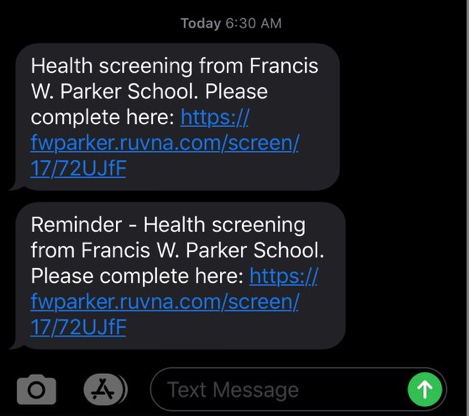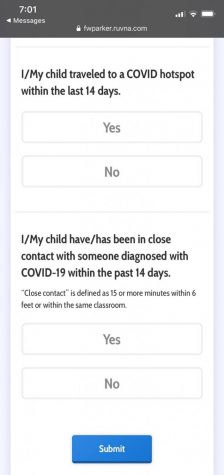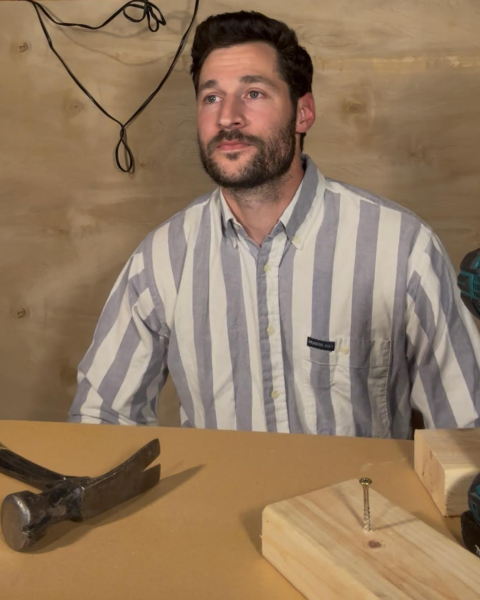COVID Questionnaire
Parker Introduces New Software for COVID Accountability

Photo credit: Jacob Boxerman
Screenshot of Ruvna’s daily text notification messages. Users can click the link to complete survey.
“Health screening from Francis W. Parker School. Please complete here.” Each morning at precisely 6:30a.m., every faculty member, staff, and Parker parent with children K-8 receive this message via text or email. It’s part of a new system the school has purchased to provide COVID-19 accountability and ensure the safety of everyone in the building.
The message contains a link to a survey, unique to each community member required to fill it out. The survey asks standard COVID-19 screening questions such as “I/my child has a temperature above 100 degrees Fahrenheit or higher?,” under which are two buttons labeled “Yes,” and “No.” Upon completion of the survey, respondents who answer yes to any question are shown a message instructing them to contact a doctor or the school nurse, and not to come into the building.
Director of Technology Peter Evans manages the software side of the new system. Evans was part of the committee that decided to subscribe to New York-based Ruvna, Inc.’s software, chosen for its simplicity and its easy integration with Parker’s existing software, the Portal. “We didn’t have to re-enter any emails and phone numbers. That made it a little bit easier on the data management side,” Evans said. “It doesn’t require any accounts, and it doesn’t require a parent to log in.”
Ruvna provides a number of school safety and security services such as crisis broadcast systems for fire and tornado drills/situations. Recently, Ruvna created their own suite of COVID-19 screening tools, which they offer to schools via a monthly subscription. While Evans did not share the exact cost, he noted that “for what it offers, it was not expensive.”

Currently the system is being used to collect additional data for the school as it monitors COVID-19 risk factors and symptoms within the Parker community.
However, according to Evans, many suburban schools that employ the Ruvna software make use of its lookup and barcode features, which would allow anyone entering the building to be searched in a database and cleared before they are permitted access to the building.
Though the Ruvna system itself is likely here to stay, according to Evans the way the software is used could change at any time. “We may end up tweaking how this is used as well,” Evans said. “We hope that we don’t have to do this forever.”





